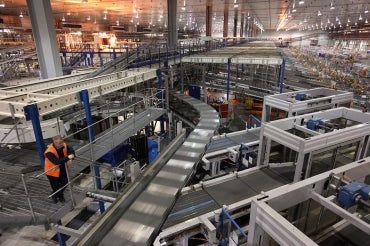Millions of Canadians could lose jobs to automation, U of T's Mowat Centre reports

Published: November 22, 2016
As technology advances, occupations from truck drivers to lawyers are at risk of becoming at least partly automated, bringing about higher unemployment and more temporary workers.
A report released today by the Mowat Centre says that, over the next two decades, millions of Canadians could be out of jobs. The Centre is part of the University of Toronto’s School of Public Policy & Governance.
Read Huffington Post story on the report
U of T News spoke with Sunil Johal, one of the authors of the report, about how Canada can adapt social policies to deal with dramatic shifts in the job market.
Is the rise of precarious work a symptom of an economic downturn or are there other factors?
I think there’s more to it than business cycles at this point. We’re seeing longer-term trends around precarious employment and non-standard work increasing over 20-year periods now. That’s something that outlives a three-to-four year economic downturn.
The main difference now from 20 to 25 years ago is the technological element to this. I think we’re seeing the rise of automation, robotics, artificial intelligence, the gig economy – all of these things together are culminating in a labour market that is far more precarious, far more task-based and in many cases, far more job-free.
How will automation affect Canadian workers?
The broader impacts of automation are yet to be seen. Companies are still figuring out how to leverage this new technology in a way that’s to their benefit that may impact jobs in a negative way.
We looked at a number of studies that have examined what potential job losses could look like in Canada. It’s a fairly broad range, but at the low end you’re looking at 1.5 million jobs in Canada and at the high end, you’re looking at about 7.5 million jobs that could be at risk of automation. That is a big number but, even if you take the low end of that, over the next 10-15 years that’s a lot of people.
The labour market in Canada right now is roughly 18 million.
That’s a game changer. We talk in the report about the fact that in the global financial crisis, Canada lost roughly 400,000 jobs. We’re talking double, triple or quadruple that number at the low end of these estimates.
Do the federal or provincial governments have policies in place to support workers at risk of losing their jobs to automation?
No, the social infrastructure is not in place right now for this type of major change to our economy. We can even argue that in the status quo current state of play in Canada, for many people, programs like employment insurance, the health care system and childcare are insufficient today. If they get worse in the labour market in the next five to 15 years, absent significant changes, those programs are not sufficient to meet the needs of Canadians in terms of coverage, quality of coverage and fundamentally, how they’re designed.
Are there examples of good social policy that Canada can learn from?
We set out a number of recommendations and options in terms of what governments might want to think about to modernize our social infrastructure.
One of the interesting ones was Denmark’s model of labour market training and support. They have a model called the “flexicurity” model – providing both flexibility and security to workers.
It’s much easier for Danish companies to hire and fire people – up to 25 per cent of Danes in the private sector switch jobs every year. There are significant levels of income replacement for unemployed workers – up to 90 per cent income replacement for workers and much higher levels of investment in training and skill support than we see in Canada.
In a world where more disruptions are happening more quickly, we would argue the Danish model is much more nimble and supportive and much more in-tune with the 21st century labour market than Canada’s model, which you could characterize as a very good model in the 1960s but not such a good model in 2016.
As we saw in the U.S. election, election cycles mean politicians can attempt to back-track on policies. What assurance do we have that long-term policies will stay in place to support at-risk workers?
The one thing that’s happening with technology that makes me optimistic that we can actually see changes – that there is a policy window for governments to do something about this – is the fact that technological disruption is not just going to be impacting those at the low-end of the income scale.
We’re going to see doctors, lawyers, engineers – all kinds of white collar professionals potentially see their job impacted in some way by these changes. That gives a much broader constituency of support for the necessary investments and program adjustments that’ll be needed in the coming years.



